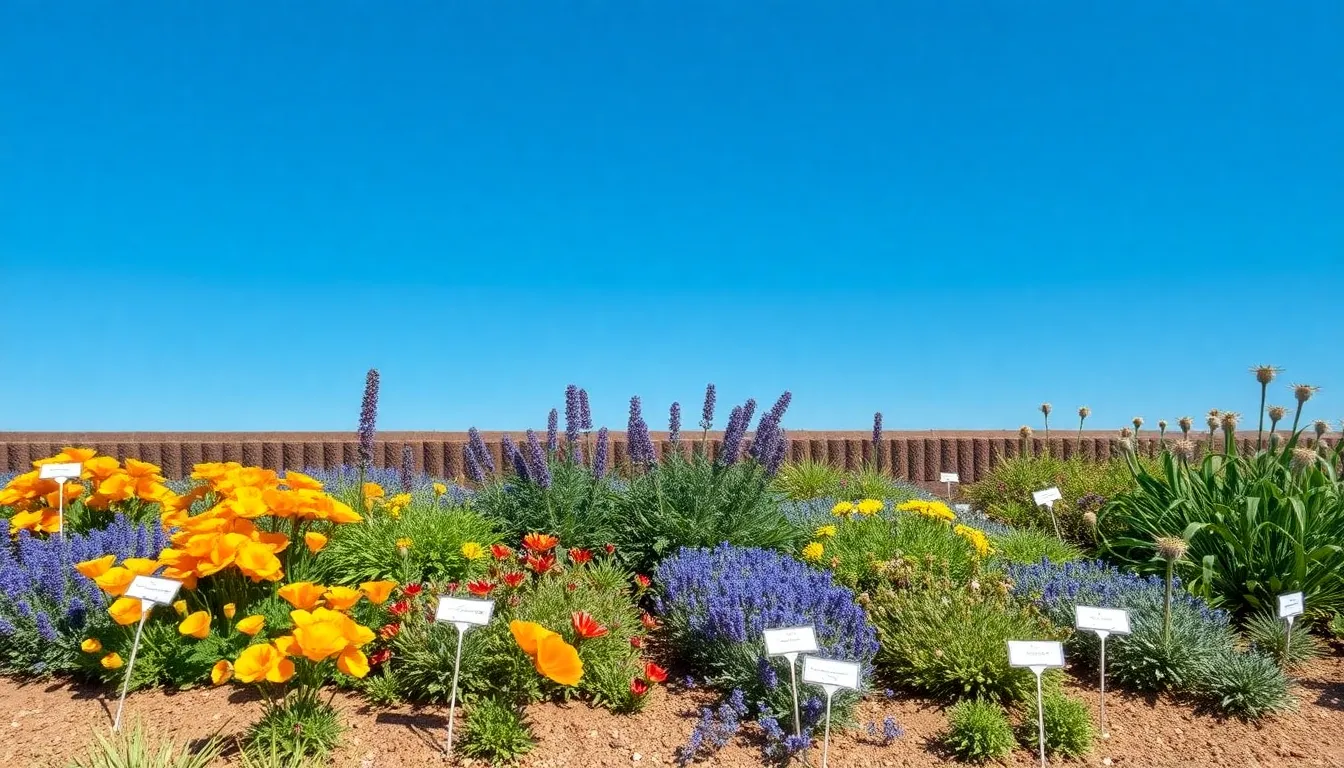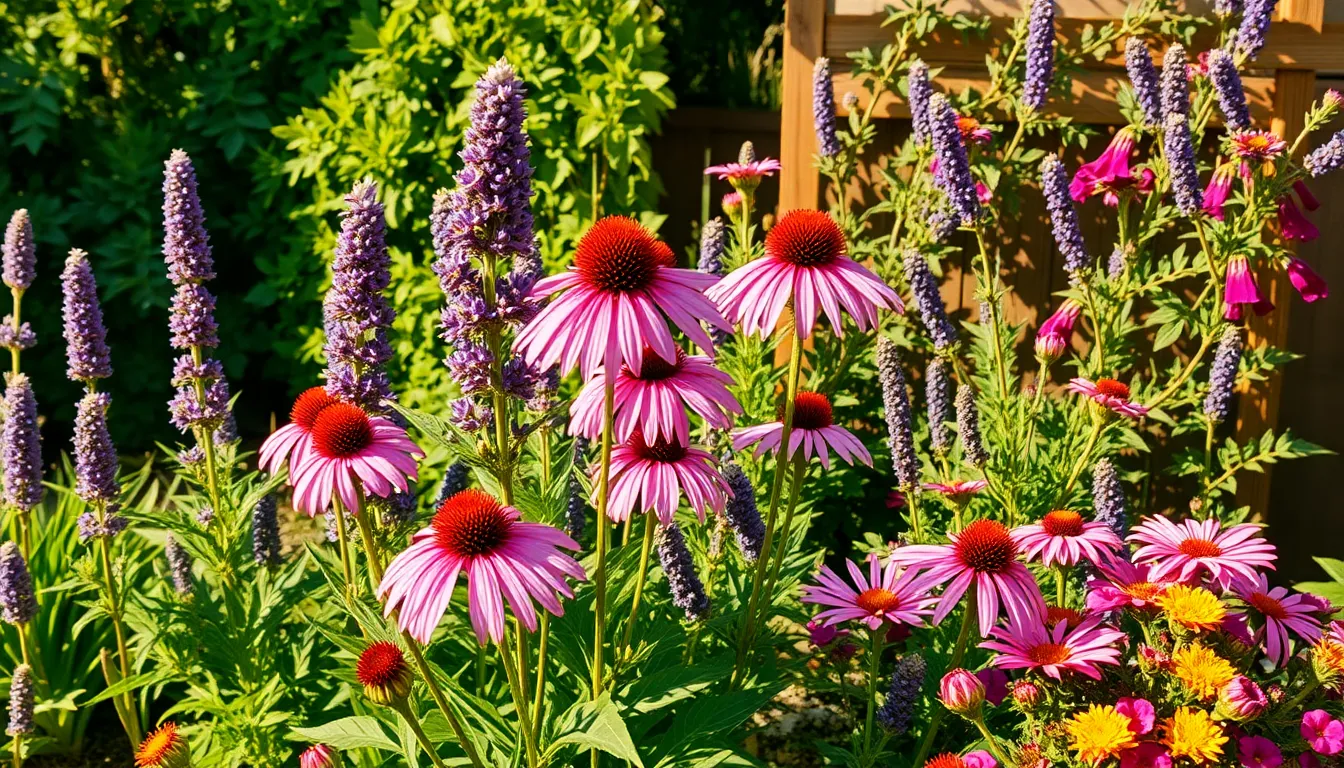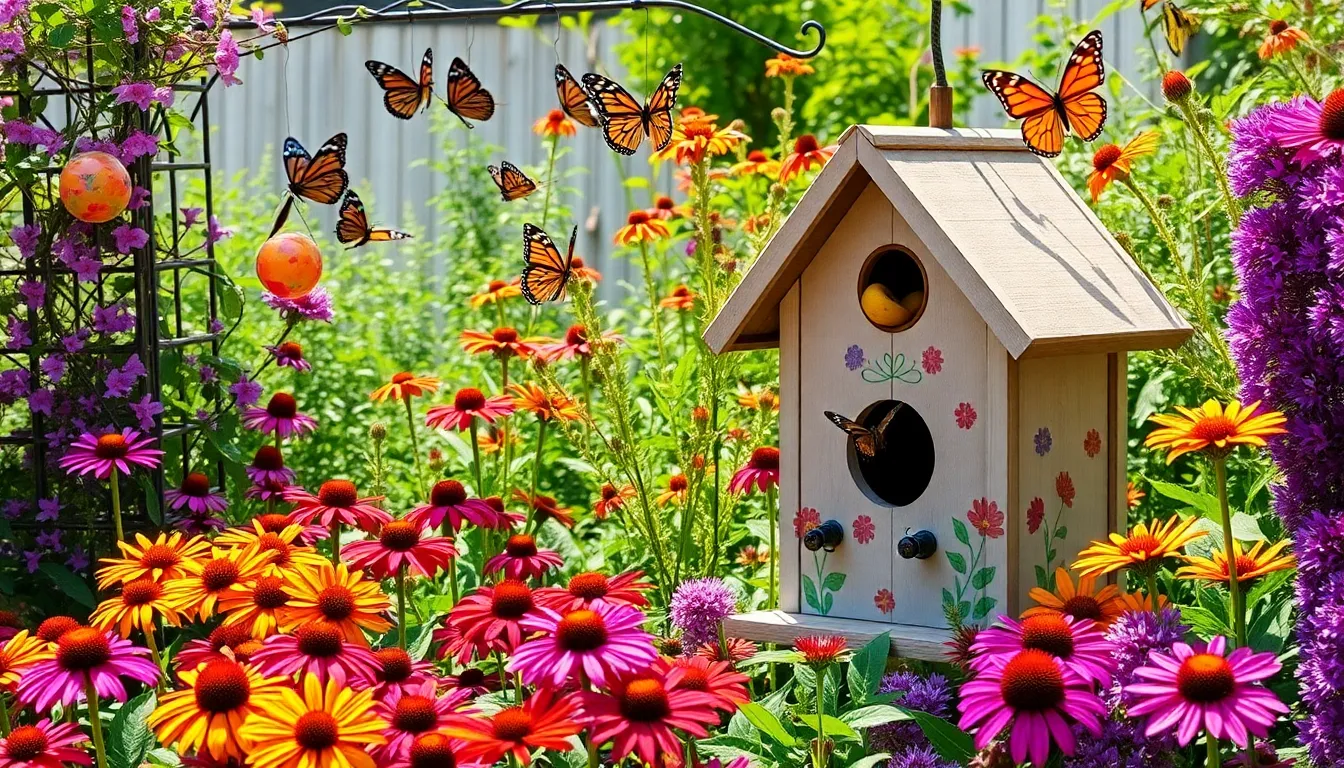Transforming your garden with vibrant flower beds can elevate any outdoor space from ordinary to extraordinary. Whether you’re just starting your gardening journey or have a seasoned green thumb, designing a flower bed offers a creative outlet that rewards you with beauty and tranquility. Choosing the right flower bed design is more than just an aesthetic decision; it’s a way to express your personal style while enhancing the health and harmony of your garden.
In this article, we’ll delve into ten easy flower bed designs that cater to both novice and veteran gardeners, ensuring you find the perfect match for your gardening goals. You’ll discover how to balance color, texture, and form to create stunning visual displays that flourish throughout the seasons. By the end of this journey, you’ll be equipped with practical tips and inspiring ideas that make flower bed planning an enjoyable and fulfilling experience. Whether you’re working with a sprawling backyard or a cozy urban plot, these designs will empower you to cultivate a garden that is both accessible and deeply personal.
Choosing the Perfect Flower Palette
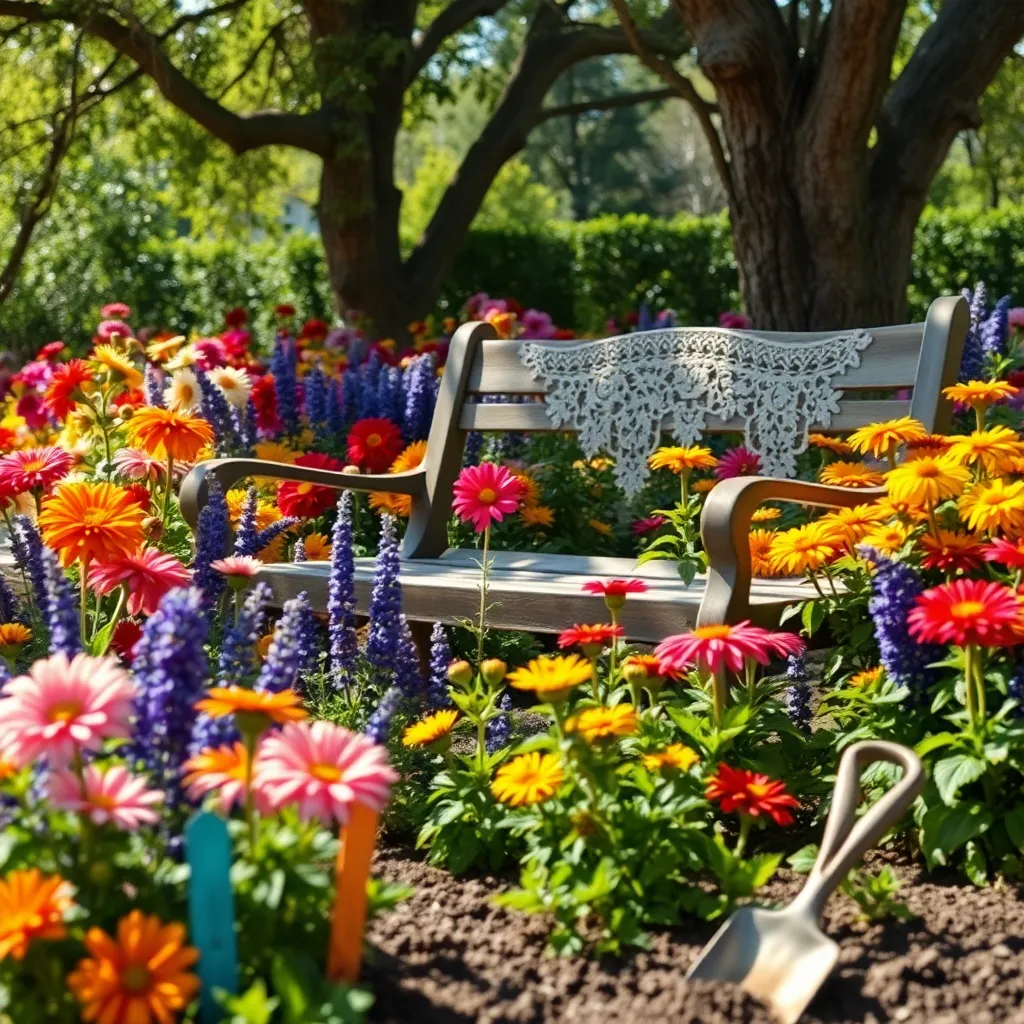
When choosing a flower palette, consider the light conditions of your garden to ensure the plants thrive. Sunny spots are ideal for sun-loving blooms like marigolds and zinnias, while shady areas benefit from plants such as impatiens and hostas.
Color harmony in your flower bed can be achieved by selecting blooms that complement each other. For a cohesive look, try using monochromatic schemes with varying shades of a single color, or create contrast with complementary colors like purple and yellow.
Soil type is another crucial factor when picking your flower palette. Most flowers prefer well-draining soil, so consider amending your garden bed with compost or sand if your soil is heavy clay.
For advanced gardeners, experimenting with texture and form adds depth to your flower bed design. Mixing different leaf shapes and flower sizes can create a dynamic visual impact, enhancing the overall aesthetic of your garden.
Designing with Curved Borders
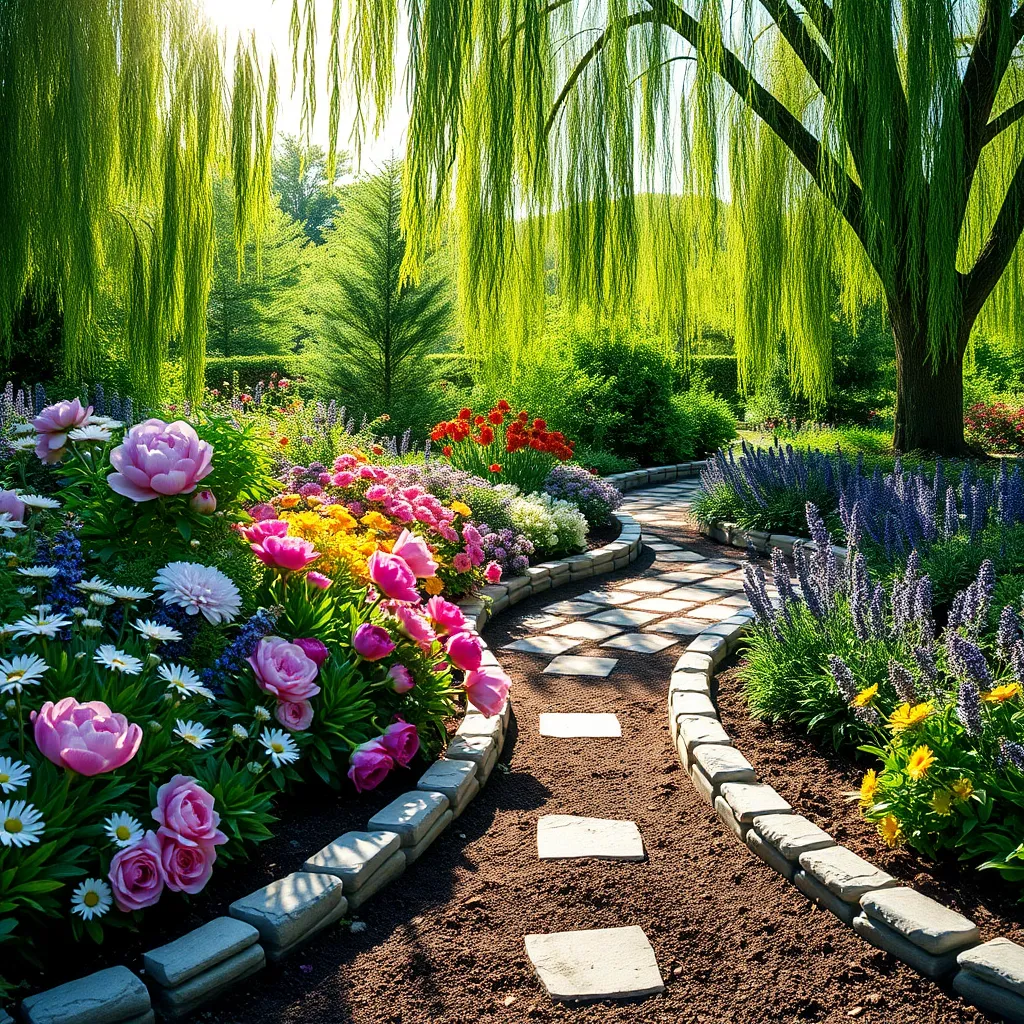
Curved borders in flower beds can add a sense of natural flow and elegance to your garden. By softening the edges, they mimic the organic shapes found in nature, creating a more inviting landscape.
To begin designing with curves, consider using a hose or rope to lay out your desired shape on the ground. This allows you to experiment with different curves before committing to a final design.
When planting within curved borders, mix tall and short plants to enhance the visual appeal. Taller plants like delphiniums or sunflowers can be placed at the back, while shorter species like marigolds and alyssum should be positioned at the front.
Ensure the soil is well-prepared by incorporating organic matter such as compost to improve fertility and drainage. This is crucial for supporting healthy plant growth, especially in areas where curves may cause water to pool.
For maintenance, keep an eye on your curved borders to ensure they do not become overgrown and lose their shape. Regular pruning and edging can help maintain the intended design and keep your garden looking neat.
Incorporating Perennials for Longevity
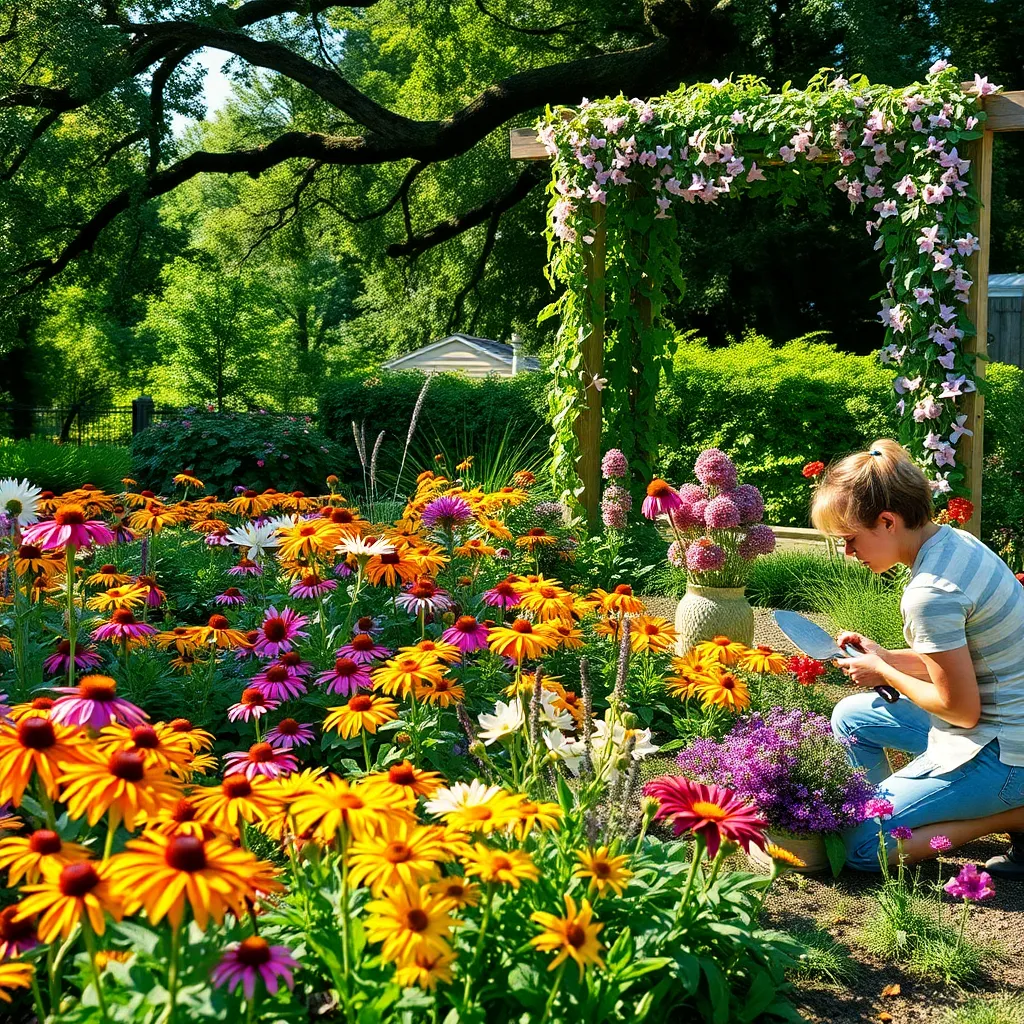
Incorporating perennials into your flower bed designs can significantly enhance the longevity and sustainability of your garden. These plants return year after year, providing a stable backbone to your garden layout.
Start by selecting perennials that thrive in your specific climate, as this ensures they will return robustly each season. Consider plants like daylilies, hostas, and coneflowers, which are known for their hardiness and low maintenance needs.
Soil preparation is crucial when planting perennials, as they need a well-draining medium rich in organic matter. Mix compost into your soil to improve its texture and fertility, which will support healthy root development.
Watering needs can vary, but as a general rule, perennials require deep watering once a week, especially during dry spells. Installing a drip irrigation system can help deliver water directly to the roots, minimizing evaporation and ensuring consistent moisture levels.
To keep your perennials thriving, consider deadheading spent blooms to encourage further flowering and growth. Additionally, dividing overcrowded perennials every few years will help rejuvenate the plants and keep them vigorous.
For those with more experience, experimenting with companion planting can enhance the health and beauty of your perennial beds. Pairing plants with different bloom times and foliage textures can create visual interest throughout the growing season.
Maximizing Space with Vertical Beds
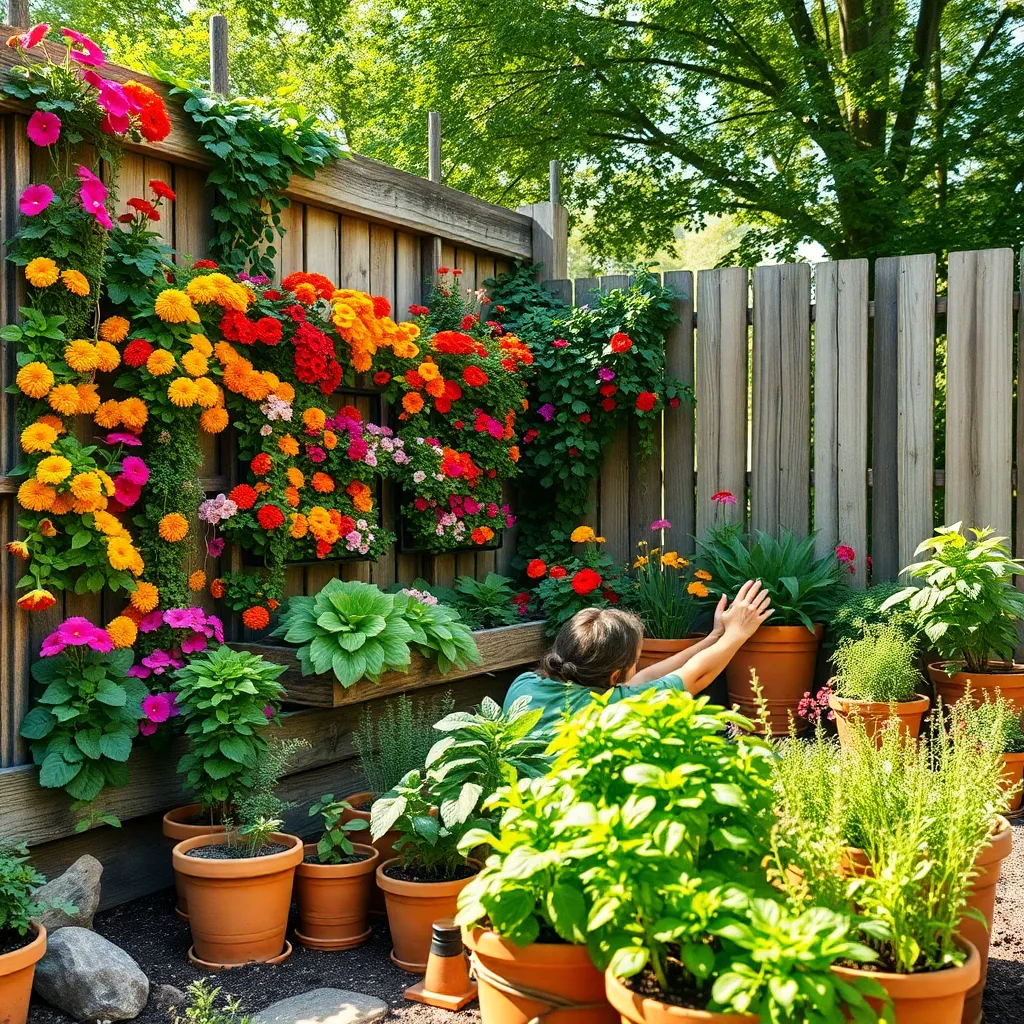
Vertical beds are an excellent solution for gardeners looking to make the most of limited space. By growing plants upward, you can create a lush, vibrant display without needing a large plot of land.
To start, consider using a sturdy support structure like a trellis or a garden wall. Choose climbing plants such as clematis or morning glories, which naturally thrive when allowed to ascend vertically.
It’s important to select soil that retains moisture while offering good drainage, such as a mix of peat, compost, and perlite. Watering should be done diligently, ensuring the soil is kept consistently moist, particularly during the growing season.
For those looking to add an advanced touch, installing a drip irrigation system can help maintain optimal hydration levels. Additionally, regular pruning will encourage healthy growth and prevent plants from becoming overcrowded.
Crafting a Cottage-Style Flower Bed
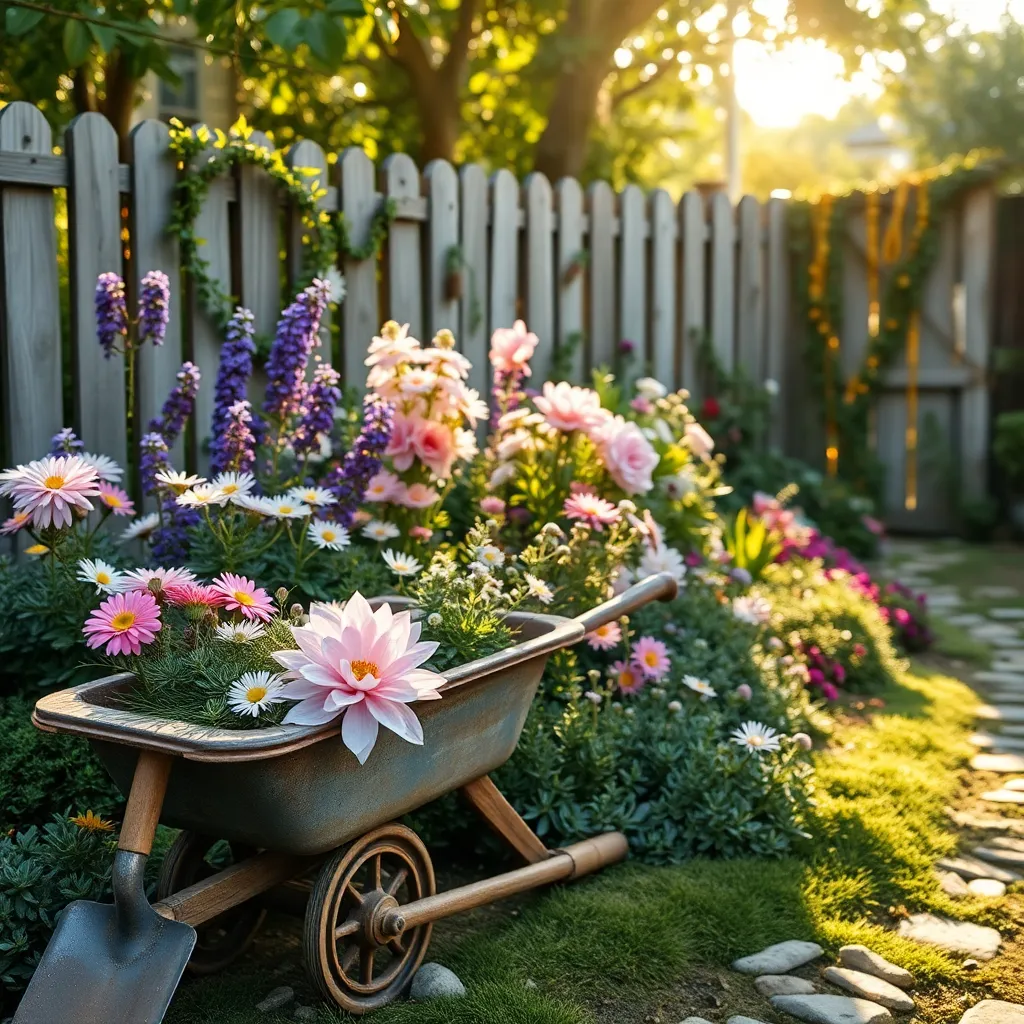
To create a charming cottage-style flower bed, start by selecting a mix of perennials and annuals that bloom at different times. This mix ensures that your garden is always vibrant and colorful throughout the growing season.
When designing your bed, aim for a natural, slightly unkempt look with plants of varying heights and textures. Taller plants like foxgloves and delphiniums can provide height at the back, while shorter plants like daisies and lavender fill in the front.
Soil preparation is key for a thriving flower bed; use a rich, well-draining soil that retains moisture yet allows excess water to escape. Incorporating organic matter such as compost will boost nutrient levels and improve soil structure, promoting robust plant growth.
Watering is crucial, especially during the establishment phase, so ensure your flowers receive about one inch of water per week. Mulching with organic materials like shredded bark or straw can help retain soil moisture and suppress weeds, reducing maintenance efforts.
Creating Symmetry with Geometric Shapes
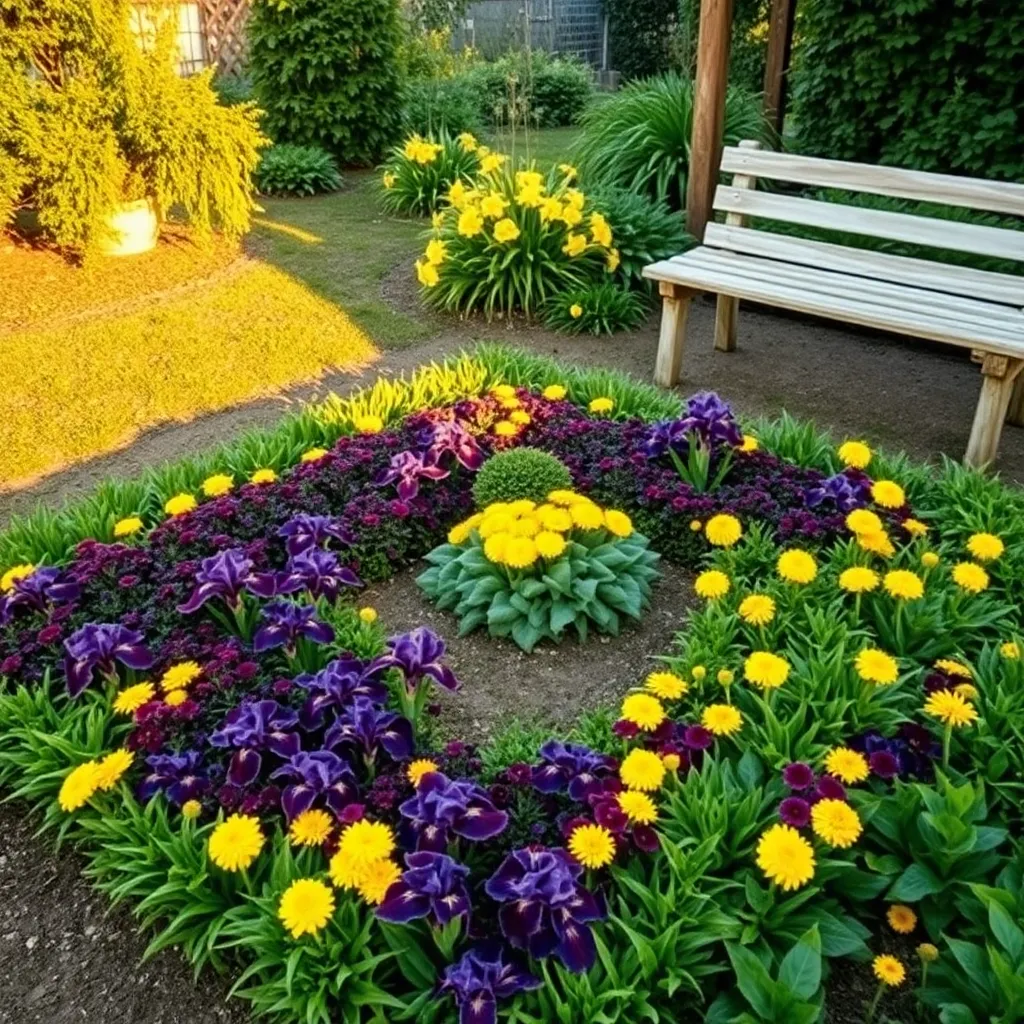
Embrace the beauty of geometry by designing your flower bed with symmetrical shapes such as circles, squares, and triangles. Start by sketching your desired shape on paper, then outline it in your garden with a hose or string to visualize the space.
For a circular flower bed, plant taller flowers like delphiniums or foxgloves in the center to create a focal point. Surround them with medium-height plants such as lavender or daisies, and finish with a border of low-growing ground covers like alyssum.
Square or rectangular beds work well for a more structured look, where you can use edging plants like boxwood or dwarf hedges. Consider planting in rows or grids, alternating colors and textures for visual interest.
Triangles add a dynamic flair to your garden, especially when placed at the corner of a yard. Use a mix of plants with varying heights to maintain balance, and ensure they all thrive in similar soil conditions, ideally well-draining loamy soil.
Watering these geometric beds is crucial, especially in the initial growth stage; aim for a deep soak once a week. Adjust the frequency based on your climate and soil type to ensure healthy plant development.
For more advanced gardeners, consider incorporating a color theme that complements the geometric shape. This adds an extra layer of sophistication and visual appeal, enhancing the overall symmetry of your garden design.
Utilizing Raised Beds for Easy Access
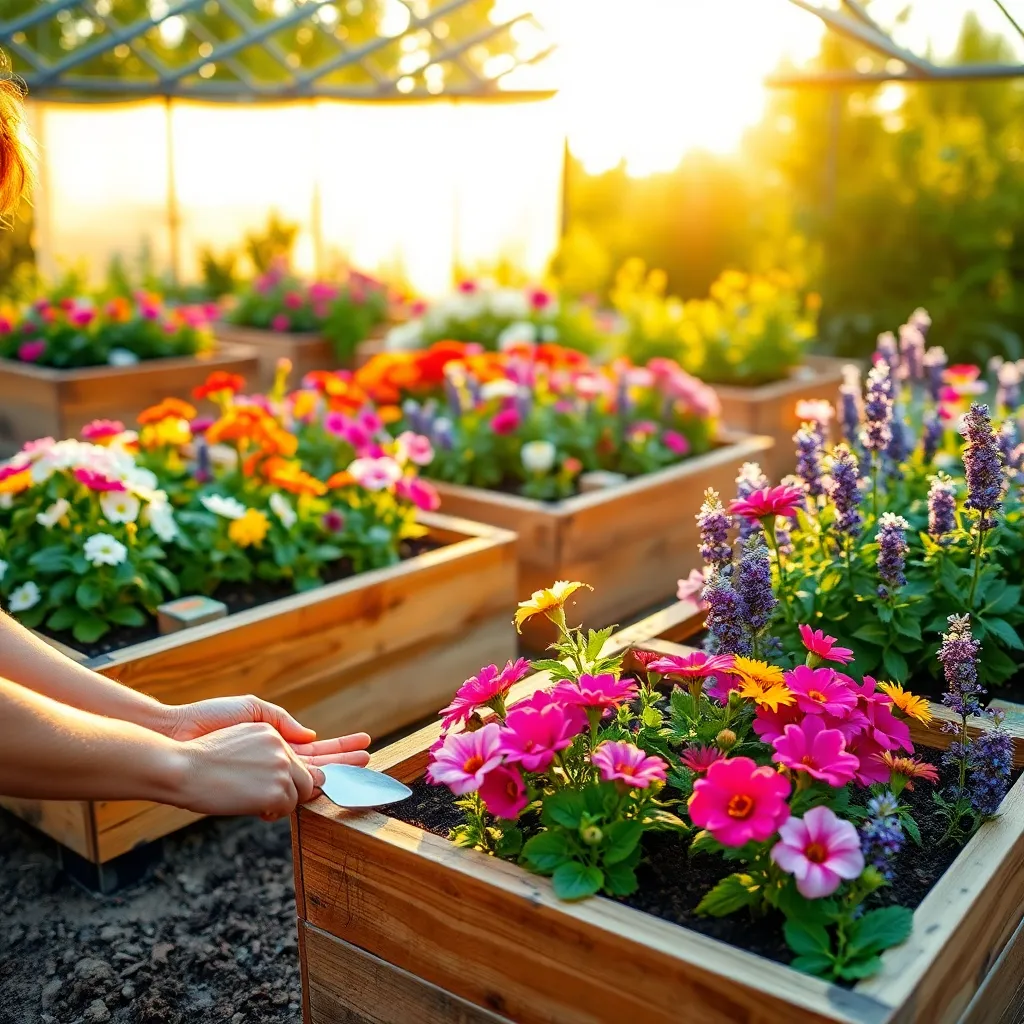
Raised beds offer a convenient solution for gardeners looking to enhance accessibility and manage plant care more effectively. By elevating your garden space, you can alleviate the need for excessive bending, making it easier to maintain your flowers.
To start, choose materials like cedar or recycled plastic for building your raised beds, as they are durable and resist rotting. Ensure the bed is at least 12 inches deep to allow ample root growth for most flowering plants.
Soil quality is crucial for the success of your raised bed garden. Mix a blend of quality topsoil, compost, and peat moss to create a nutrient-rich environment that promotes healthy plant development.
Watering your raised beds efficiently is key. Implementing a drip irrigation system can help maintain optimal moisture levels, reducing water waste and ensuring even distribution.
Experienced gardeners might consider adding a layer of mulch on top of the soil. This helps in retaining moisture, suppressing weeds, and providing a tidy appearance to your flower beds.
For plant selection, opt for flowers that thrive in the climate and conditions of your garden. Marigolds, zinnias, and petunias are excellent choices for beginners, requiring minimal maintenance and blooming throughout the growing season.
Seasonal Planting for Year-Round Color
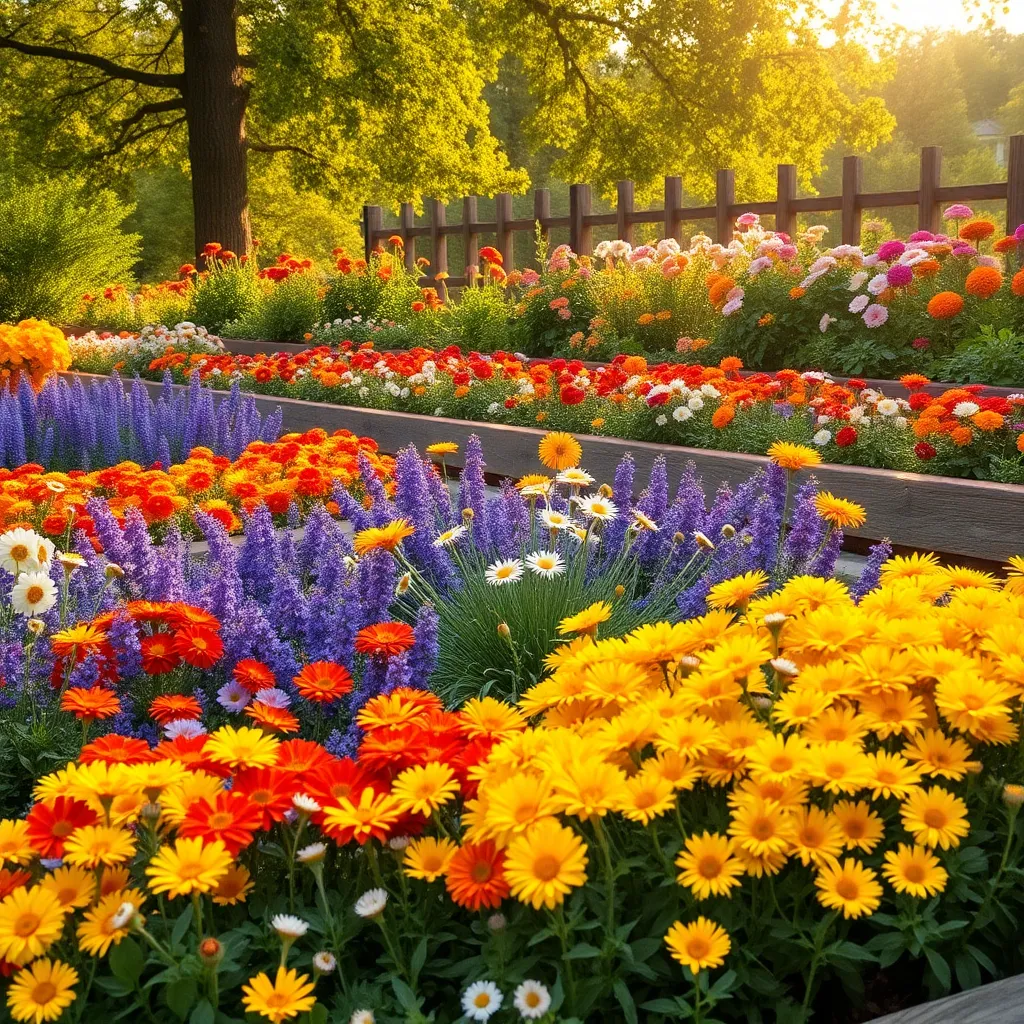
To achieve year-round color in your garden, it’s essential to plan for seasonal planting. Select plants that bloom in different seasons, ensuring that as one fades, another begins to shine.
Start with spring by planting tulips and daffodils in the fall, as they require a cold period to bloom beautifully. Plant these bulbs in well-draining soil and ensure they receive full sun for optimal growth.
As summer approaches, focus on adding vibrant annuals like marigolds and petunias. These sun-loving plants thrive in nutrient-rich soil, so consider mixing in some compost at planting time for an extra boost.
Autumn is the perfect time for asters and chrysanthemums, which can extend your garden’s color well into the cooler months. Ensure they receive at least six hours of sunlight a day and water them regularly to maintain their blooms.
- For winter interest, consider planting evergreen shrubs or winter-blooming plants like hellebores.
- These plants require minimal maintenance and can provide structure and greenery when most other plants are dormant.
By strategically planning your plant choices, you can enjoy a garden that offers visual interest throughout the entire year. Don’t forget to mulch around your plants to help retain moisture and suppress weeds, making maintenance easier as the seasons change.
Mixing Heights for Dynamic Layers
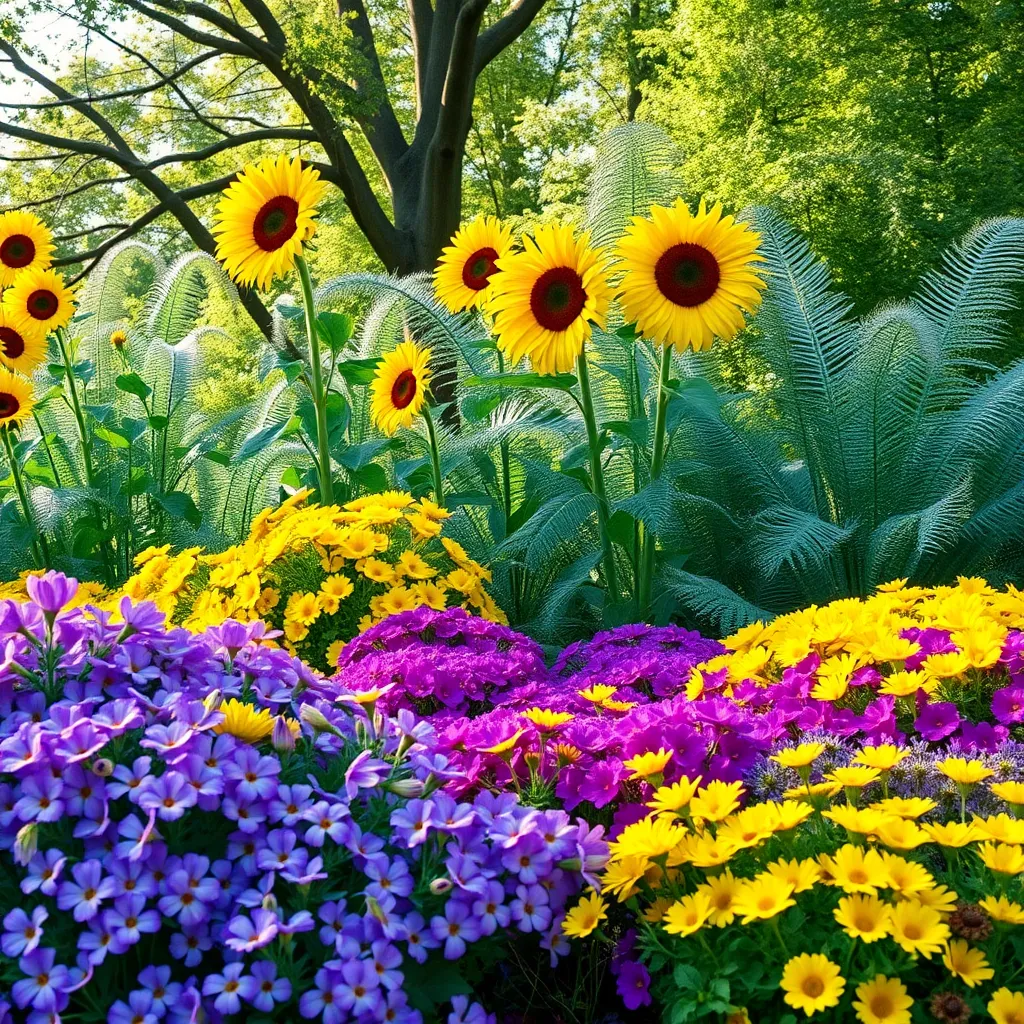
Creating dynamic layers in your flower bed is an excellent way to add visual interest and depth. Start by selecting plants with varying heights, such as tall delphiniums, medium-height coneflowers, and low-growing alyssum.
Consider the sun and soil requirements for each plant to ensure they thrive together. Most flowering plants prefer well-drained soil, so incorporate organic matter like compost to improve soil structure and fertility.
For beginners, a simple plan might involve planting the tallest varieties at the back of the bed. Medium-sized plants should be positioned in the middle, with shorter plants at the front to create a tiered effect.
Advanced gardeners might experiment with more complex arrangements, like staggering taller plants throughout the bed for a more natural look. Remember, regular watering is crucial, especially during dry spells, to maintain healthy growth and vibrant blooms.
Adding Mulch for Low Maintenance
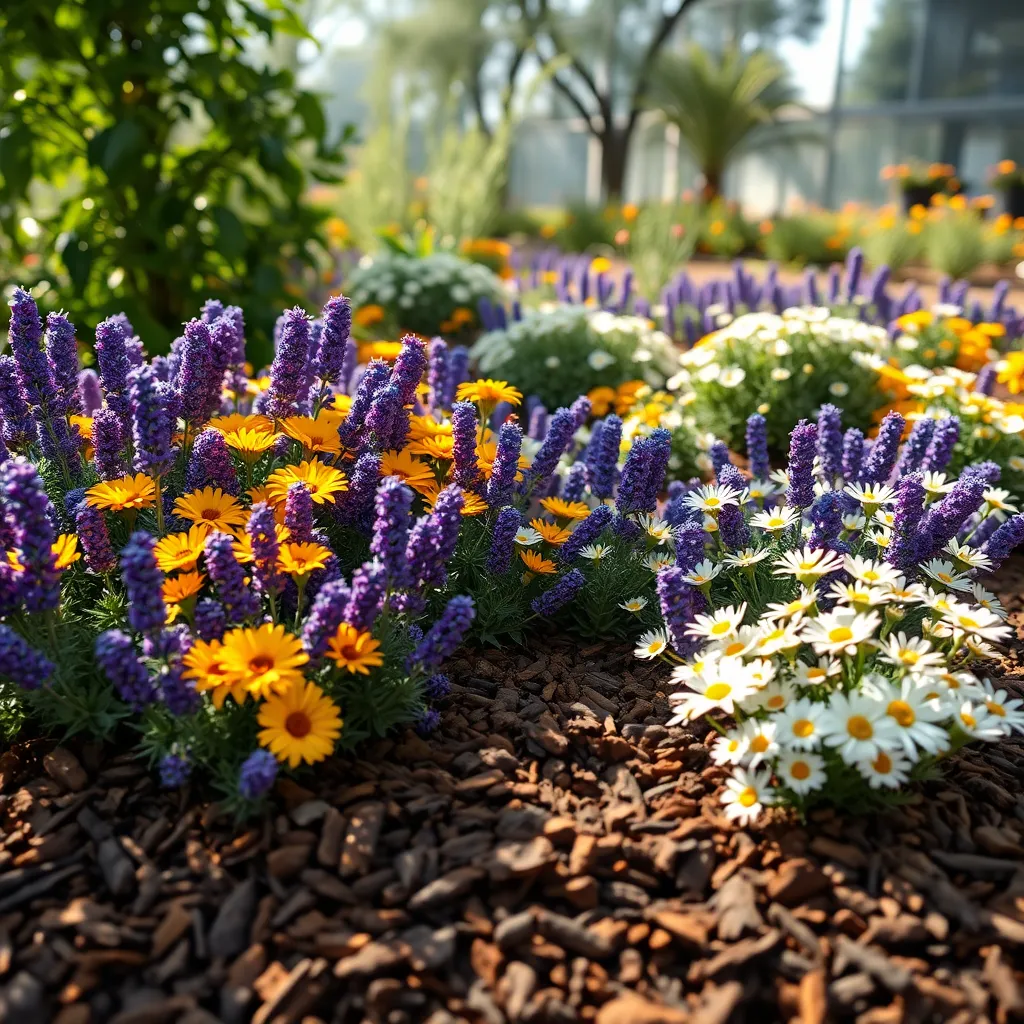
Adding mulch to your flower beds is a simple yet highly effective way to create a low-maintenance garden. It helps retain moisture, suppresses weeds, and regulates soil temperature, making it a crucial component for thriving plants.
To start, choose the right type of mulch for your needs; organic options like shredded bark, wood chips, or straw are excellent choices. Apply a layer of about 2 to 3 inches thick, ensuring it doesn’t touch the stems of your plants to prevent rot.
Consider the timing of your mulching for optimal benefits. Applying mulch in late spring, after the soil has warmed, can maximize moisture retention and weed suppression throughout the growing season.
Beyond the basics, more experienced gardeners might experiment with different mulch types to enhance soil nutrition. Compost or well-rotted manure can be used as mulch to slowly feed the soil, providing additional nutrients to your plants.
Conclusion: Growing Success with These Plants
In exploring ’10 Easy Flower Bed Designs,’ we’ve unearthed a bouquet of relationship insights that blossom with the right care. From the importance of diversity and balance in relationships, akin to mixing perennials and annuals, to nurturing growth through regular communication like watering your garden, each concept highlights the parallels between cultivating a thriving garden and a flourishing relationship. Understanding the value of patience, as gardens and relationships both take time to mature, and the beauty of seasonal adaptability, where change is embraced rather than resisted, provides a roadmap to deepen your connection.
Now, take action—choose one concept that resonates most with you and implement it today. Whether it’s dedicating time to listen more or introducing a new hobby to share, small steps can lead to significant growth.
Don’t let these insights wither away; bookmark this article as a go-to guide for ongoing reference. As you continue to plant seeds of understanding and love, remember that success in relationships, like in gardening, is an ever-evolving journey. Embrace it with an open heart, and watch your connections bloom.


